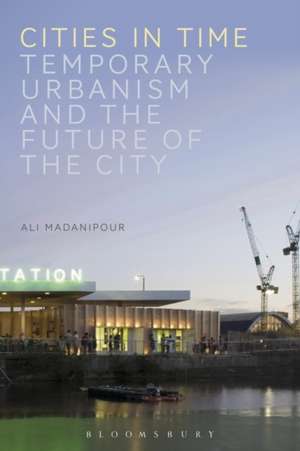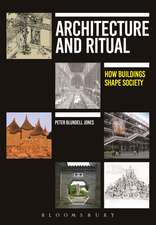Cities in Time: Temporary Urbanism and the Future of the City
Autor Professor Ali Madanipouren Limba Engleză Paperback – 22 feb 2017
| Toate formatele și edițiile | Preț | Express |
|---|---|---|
| Paperback (1) | 179.56 lei 6-8 săpt. | |
| Bloomsbury Publishing – 22 feb 2017 | 179.56 lei 6-8 săpt. | |
| Hardback (1) | 714.92 lei 6-8 săpt. | |
| Bloomsbury Publishing – 22 feb 2017 | 714.92 lei 6-8 săpt. |
Preț: 179.56 lei
Preț vechi: 208.08 lei
-14% Nou
Puncte Express: 269
Preț estimativ în valută:
34.36€ • 35.88$ • 28.37£
34.36€ • 35.88$ • 28.37£
Carte tipărită la comandă
Livrare economică 15-29 aprilie
Preluare comenzi: 021 569.72.76
Specificații
ISBN-13: 9781474220712
ISBN-10: 1474220711
Pagini: 216
Ilustrații: 50 B&W illustrations
Dimensiuni: 156 x 234 x 12 mm
Greutate: 0.39 kg
Editura: Bloomsbury Publishing
Colecția Bloomsbury Academic
Locul publicării:London, United Kingdom
ISBN-10: 1474220711
Pagini: 216
Ilustrații: 50 B&W illustrations
Dimensiuni: 156 x 234 x 12 mm
Greutate: 0.39 kg
Editura: Bloomsbury Publishing
Colecția Bloomsbury Academic
Locul publicării:London, United Kingdom
Caracteristici
Provides conceptual tools with which to understand the growing phenomena of 'pop-up' architecture and temporary urbanism - why they have developed and what they mean for the future of cities
Notă biografică
Ali Madanipour is professor of urban design and director of the Global Urban Research Unit (GURU) at Newcastle University, UK. In 2010 he was the City of Vienna senior visiting professor at the Technical University of Vienna, and in 2011 the Wits-Claude Leon Distinguished Scholar, University of Witwatersrand, South Africa. He has published numerous books on planning, design, development and management of cities, which have been translated into many languages. His more recent publications include Critical Concepts in the Built Environment: Planning Theory (2015), Reconsidering Localism, (2015), Urban Design, Space and Society (2014) and Knowledge Economy and the City: Spaces of Knowledge (2011).
Cuprins
Chapter 1. Multiple times of the cityPart One: Instrumental temporalityChapter 2. Regulating change, reifying timeChapter 3. Accelerated beats of global timePart Two: Existential temporalityChapter 4. Temporality, memory and identityChapter 5. Nature, time and anxietyPart Three: Experimental temporalityChapter 6. Events and prospectsChapter 7. Cities in timeReferencesIndex
Recenzii
This is a robust contribution on an emergent topic.
Ali Madanipour has produced with this expertly written book a long overdue theoretical contextualisation of Temporary Urbanism. By taking three different notions of time - instrumental, existential, and experimental - the book delivers a striking conceptual approach and multidimensional understanding of Temporary Urbanism that goes far beyond the numerous studies and texts published over the last decade.
Britain's top theorist of spatial exclusion now tackles the new urban spaces drawing the public in. Madanipour brilliantly shows how temporary urbanism - fleeting fashion in urban design, land-uses and lifestyles - is a symptom of living in fast, but precarious times, as the city itself becomes an ephemeral event.
Ali Madanipour has produced with this expertly written book a long overdue theoretical contextualisation of Temporary Urbanism. By taking three different notions of time - instrumental, existential, and experimental - the book delivers a striking conceptual approach and multidimensional understanding of Temporary Urbanism that goes far beyond the numerous studies and texts published over the last decade.
Britain's top theorist of spatial exclusion now tackles the new urban spaces drawing the public in. Madanipour brilliantly shows how temporary urbanism - fleeting fashion in urban design, land-uses and lifestyles - is a symptom of living in fast, but precarious times, as the city itself becomes an ephemeral event.









